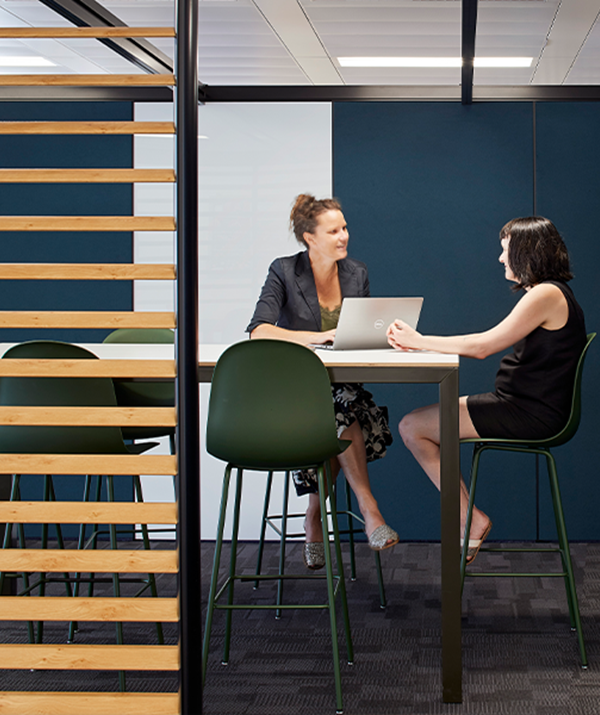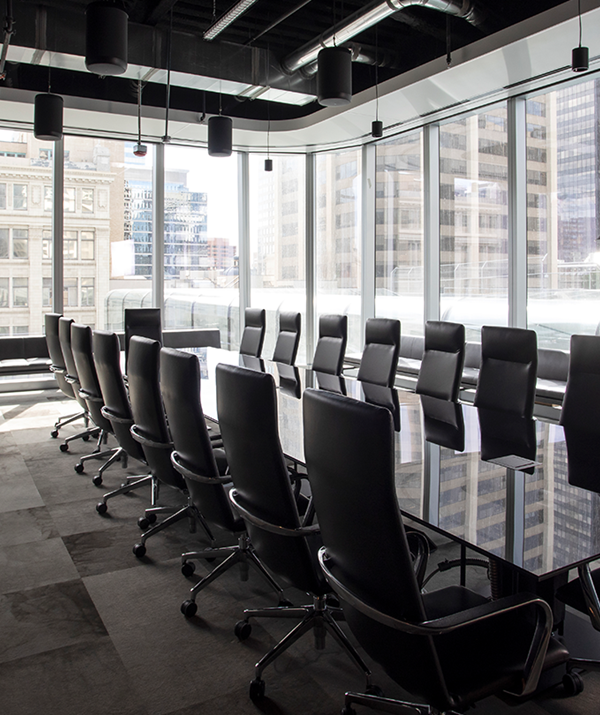The best workplace furniture design isn't built around the workplace. It's built around people. Your working environment is a largely defined by the furniture within it. So, improving your workplace furniture is the quickest, easiest, and most cost-effective way to transform the space you work in. Discover the 10 principles of positive workplace furniture, curated by Adrian Campbell.
Prevolv Inscape Showroom / Fulton Market, Chicago / 12,000sqft
01. Workplace furniture is not about the workplace, it’s about people.
The modern workplace can take many different forms. But at the heart of it are people. Individuals. Start with them, not the space.
02. Workplace furniture is the most cost-effective way to improve your space.
The average cost of a desk space in an office building over 10 years is £150,000 (2018, London). And the average UK salary over 10 years is £344,730 (2018, London). That’s an investment of over £500,000 in the person and the space they work in.
So the cost of the furniture you provide is going to have a disproportionately positive or negative effect on your investment in people and space.
With salaries and benefits comprising around 90% of the operating costs of any typical large business, even modest increases in productivity arising from better working environments can have a significant impact
on the bottom line.
03. Workplace chairs should work like, with and for the human body.
Desks are structural, rigid, and more akin to the architecture of the building, but workplace chairs should be designed to support the people that use them. Their mechanisms should be built around human bone and muscle structures. Style is good, but substance is crucial.


Royal Mail / Islington, London - Unity / Calgary, Canada / 26,000sqft (L-R)
04. Open-plan is a solution, not the solution.
Open-plan office environments are considered to offer workplace productivity benefits because of the opportunities they create for interaction and knowledge exchange. But what about individual work? Do noise, distraction and loss of privacy significantly affect an individual’s productivity?
05. Don’t under-estimate desks.
The desk is a highly effective tool, often greatly undervalued. Some may regard desks as things that simply keep the paper off the floor. But that is to ignore their potential.
Most of us spend at least 60% of our working day using desk height surfaces to think and concentrate. Chosen, placed, and used wisely, a desk can transform how well we work – and with it, the productivity of an entire workplace.
06. Workplace furniture should adapt to people, not vice versa.
Workplace furniture has become technical rather than human. If you want to move to a space best suited to your needs the furniture and setting must make the purpose obvious. Technology should allow the space to be engaged with immediately, without frustrations and time delays. The furniture, workplace and its environment must be based on human and social need. People should come first.
AXA / Calgary, Canada / 26,000sqft
07. Many seats make light work.
Why would you sit on one chair in one space for the whole day at work? It just doesn’t make sense.
Think about all the spaces you live in at home. You have a kitchen to nourish, a lounge to socialise, a bathroom for solace, and a bedroom to relax. Then think of the many and different seats you sit on at home and all the ones you use when travelling to work or when you’re out and about – sitting in a coffee shop, at a restaurant, in a bar etc.
Mix it up. Variety works at work.
08. Workplace furniture should make you feel at home.
Increasingly, technology allows us to work wherever we want. Yet ironically, rather than choosing to work at home, most of us prefer to go to the office. And once we’re there, we choose to make it look and feel like home. Workplace furniture should help us do that.
09. Let posture work its magic.
When we stand, we move more, have more energy and engage more – all of which keeps us focused. When we perch, we’re transitory, there for a short time and have to use different body muscles. When we sit on a task chair our muscles are not strained and we concentrate and focus. When we relax, we open the diaphragm, so we breathe better and become physically more open as our arms fall away. When we recline, we spread our weight over our whole body. We become more reflective and literally have a different outlook.
How we hold ourselves, change position and move can have a significant impact in the workplace. Especially if we are allowed to do this comfortably and at will.
10. Workplace furniture can create a positive, productive space.
There are as many ways to design a workplace as there are workplaces.
To design is to ask questions.
Would you prefer to design a workplace that is more formal or informal, or combines both? Does your workplace furniture lean more towards stimulation or banality? Do you prefer collaborative or focused workspaces, or a mixture? Etc...
Discover more of Adrian by downloading the book 'It's All About Me'.
Discover more
Are you in the right place?